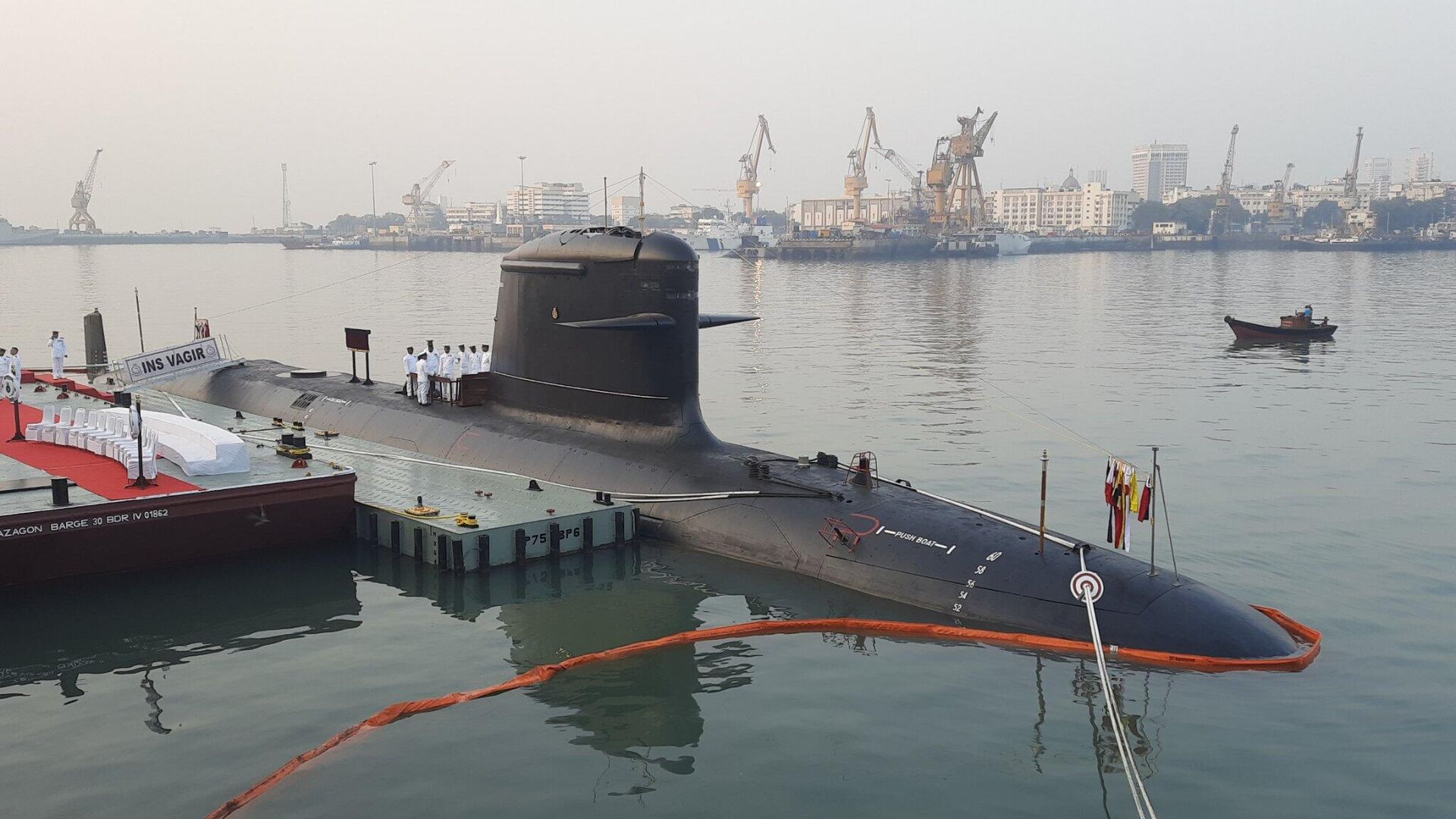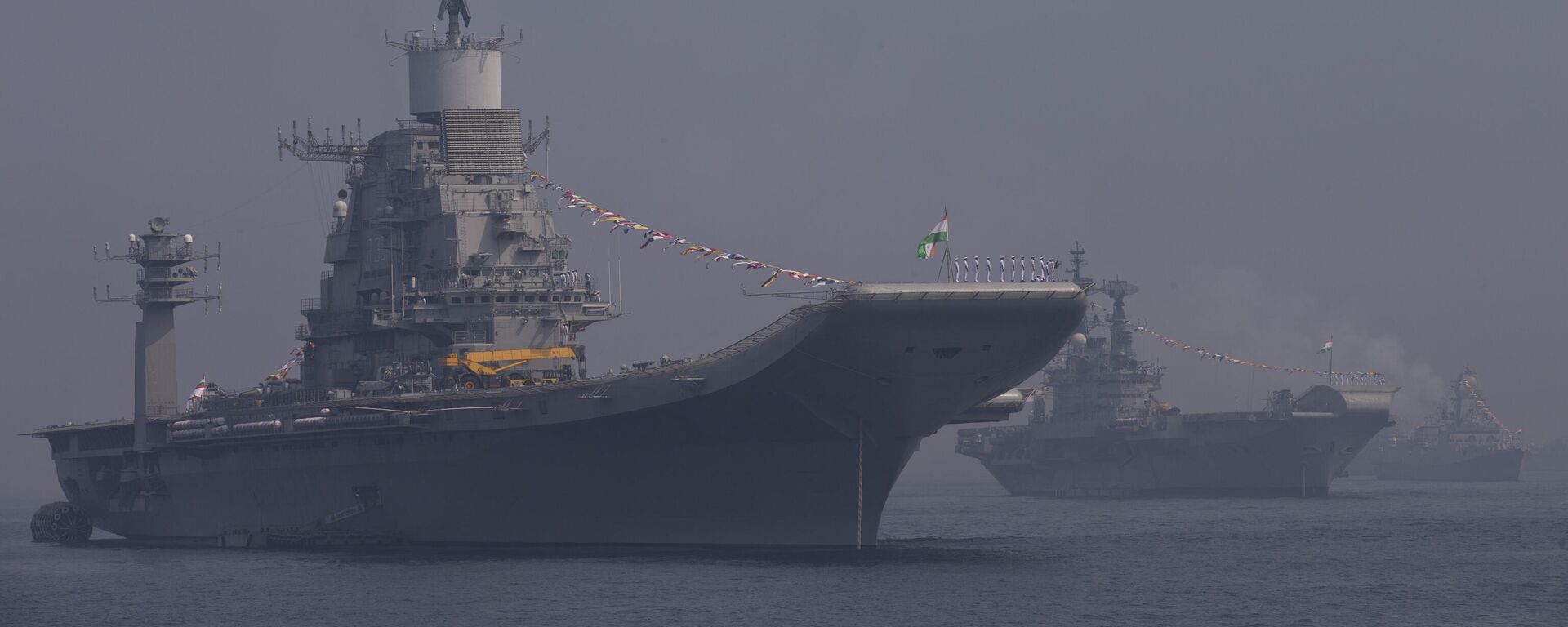https://sputniknews.in/20240529/how-ally-russia-aids-india-in-building-its-nuclear-sub-fleet-7480627.html
How Russia Helps India in Upgrading Its Nuclear Sub Fleet
How Russia Helps India in Upgrading Its Nuclear Sub Fleet
Sputnik India
India's nuclear submarine program is considered the South Asian giant's most ambitious endeavour, since this is the only domain, where India has yet to taste complete success.
2024-05-29T21:15+0530
2024-05-29T21:15+0530
2024-05-30T11:11+0530
india
russia
visakhapatnam
indian navy
submarine
nuclear-powered attack submarine
nuclear submarine
moscow
delhi
new delhi
https://cdn1.img.sputniknews.in/img/07e7/01/17/594395_0:1:2048:1153_1920x0_80_0_0_b73c58543829dc69e3cc37da16e1db46.jpg
India is set to commission its second nuclear-powered ballistic missile submarine (SSBN) by the end of this year, the media outlet Janes reported on Tuesday.The INS Arighat SSBN weighs over 6,000 tonnes and measures 111.6 meters long. Additionally, the naval vessel features a draught of 9.5 meters and a beam of 11 meters.Underwater, the Arighat moves at a maximum speed of 24 knots per hour, while on the surface it can float at 10 knots.Russia's Role in India's SSBN ProgramIncidentally, Russia came to its aid as India pushed it's long-time partner ahead with the development of SSBNs in the country.Like the Arihant, an 82.5 MW pressurized light water reactor (LWR) will propel the Arighat and it is worth highlighting that Russia helped Indian scientists in perfecting this technology.Against this backdrop, Russian military veteran, Igor Kurdin, presently serving as the head of the Saint-Petersburg NAVY veteran's club told Sputnik that India is engaging Russia as an ally, which has a lot of experience in developing submarines, nuclear reactors, and weapons.He explained that Russia has been helping India in its nuclear-attack submarine project.He explained that submarine construction is a complex process that involves not just technology, but also the training of individuals. Experience is crucial for acquiring the necessary skills beyond pure technical knowledge.Operating and maintaining a nuclear submarine requires a highly intricate and complex ecosystem, Anil Jai Singh, a former specialist submariner in the Indian Navy with almost three decades of experience, echoes Kurdin's words in a conversation with Sputnik India.Russians have been assisting India with their nuclear submarine program as early, as the 1980s, This began when the Soviet Union leased a Charlie-class submarine to India.In addition, there is a plethora of accompanying infrastructure necessary for any nuclear capability, including safety measures, harbour support, and maintenance. As India gains experience and knowledge about nuclear submarine operations and probably nuclear submarine construction to some extent, certainly there has been Russian support so far, the military veteran concluded.Meanwhile, launched in 2017 in Visakhapatnam, the introduction of Arighat into the Indian Navy enables India's blue water force to deploy at least one SSBN on both its Eastern and Western seaboard. Prior to this, the first SSBN, INS Arihant, was commissioned into service in 2016.
https://sputniknews.in/20240430/what-navys-plan-to-achieve-100-percent-self-reliance-in-warship-making-means-for-india-7255955.html
india
russia
visakhapatnam
moscow
delhi
new delhi
south asia
Sputnik India
feedback.hindi@sputniknews.com
+74956456601
MIA „Rossiya Segodnya“
2024
Pawan Atri
https://cdn1.img.sputniknews.in/img/07e6/0c/13/139630_147:0:831:684_100x100_80_0_0_8fa2b25903e7787fe6a2698552c167df.png
Pawan Atri
https://cdn1.img.sputniknews.in/img/07e6/0c/13/139630_147:0:831:684_100x100_80_0_0_8fa2b25903e7787fe6a2698552c167df.png
News
en_IN
Sputnik India
feedback.hindi@sputniknews.com
+74956456601
MIA „Rossiya Segodnya“
Sputnik India
feedback.hindi@sputniknews.com
+74956456601
MIA „Rossiya Segodnya“
Pawan Atri
https://cdn1.img.sputniknews.in/img/07e6/0c/13/139630_147:0:831:684_100x100_80_0_0_8fa2b25903e7787fe6a2698552c167df.png
ins arighat, india nuclear-powered ballistic missile submarine, india ssbn, india nuclear submarine, indian navy nuclear submarine fleet, india navy news, indian defense news, how many nuclear submarines india has, india nuclear submarine program, india nuclear submarine project,
ins arighat, india nuclear-powered ballistic missile submarine, india ssbn, india nuclear submarine, indian navy nuclear submarine fleet, india navy news, indian defense news, how many nuclear submarines india has, india nuclear submarine program, india nuclear submarine project,
How Russia Helps India in Upgrading Its Nuclear Sub Fleet
21:15 29.05.2024 (Updated: 11:11 30.05.2024) India's nuclear submarine program is considered the South Asian giant's most ambitious endeavour, since this is the only domain, where India has yet to taste complete success.
India is set to commission its second nuclear-powered ballistic missile submarine (SSBN) by the end of this year, the media outlet Janes reported on Tuesday.
The INS Arighat SSBN weighs over 6,000 tonnes and measures 111.6 meters long. Additionally, the naval vessel features a draught of 9.5 meters and a beam of 11 meters.
Underwater, the Arighat moves at a maximum speed of 24 knots per hour, while on the surface it can float at 10 knots.
Russia's Role in India's SSBN Program
Incidentally, Russia came to its aid as India pushed it's long-time partner ahead with the development of SSBNs in the country.
Like the Arihant, an 82.5 MW pressurized light water reactor (LWR) will propel the Arighat and it is worth highlighting that Russia helped Indian scientists in perfecting this technology.
Against this backdrop, Russian military veteran,
Igor Kurdin, presently serving as the head of the Saint-Petersburg NAVY veteran's club told Sputnik that India is engaging Russia as an ally, which has a lot of
experience in developing submarines, nuclear reactors, and weapons.
He explained that Russia has been helping India in its nuclear-attack submarine project.
"First, we leased our submarines to them. Now, there's a third submarine that's getting ready for this transfer. The only condition that the Indians put forward is that the vessel must be modernised at the factory in Severodvinsk," Kurdin stressed.
He explained that submarine construction is a complex process that involves not just technology, but also the training of individuals. Experience is
crucial for acquiring the necessary skills beyond pure technical knowledge.Operating and maintaining a nuclear submarine requires a
highly intricate and complex ecosystem, Anil Jai Singh, a
former specialist submariner in the Indian Navy with almost three decades of experience, echoes Kurdin's words in a
conversation with Sputnik India.
Russians have been assisting India with their nuclear submarine program as early, as the 1980s, This began when the Soviet Union leased a Charlie-class submarine to India.
"It helped India to get familiar with the complexity of operating nuclear submarines. Because submarines are very complex machines and a nuclear submarine brings a second level of complexity with nukes on board," Singh said.
In addition, there is a plethora of accompanying infrastructure necessary for any nuclear capability, including safety measures, harbour support, and maintenance.
As India gains experience and knowledge about nuclear submarine operations and probably nuclear submarine construction to some extent, certainly there has been Russian support so far, the military veteran concluded.
Meanwhile, launched in 2017 in Visakhapatnam, the introduction of Arighat into the Indian Navy enables
India's blue water force to deploy at least one SSBN on both its Eastern and Western seaboard. Prior to this, the first SSBN, INS Arihant, was commissioned into service in 2016.



